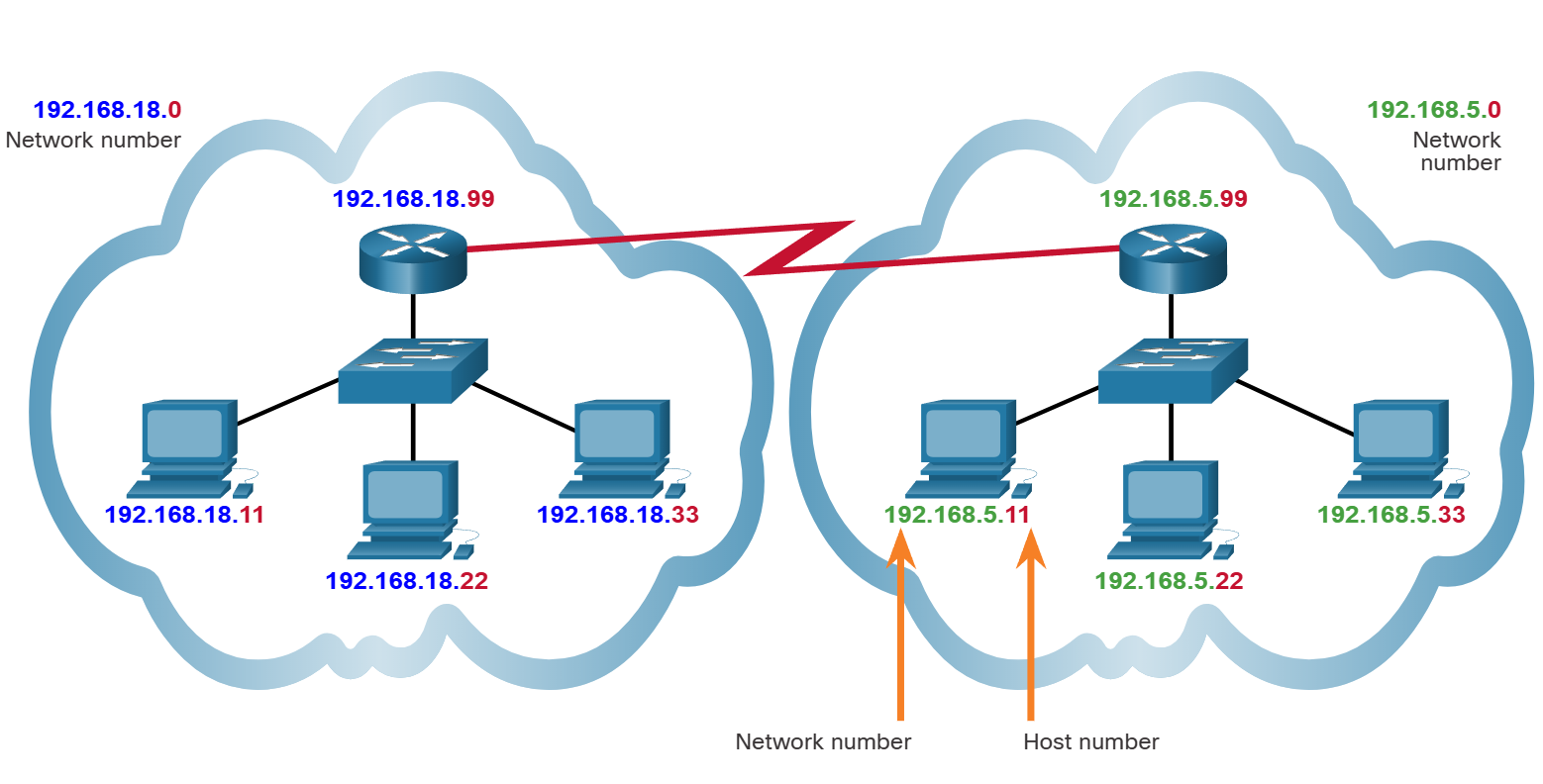8 - The Internet Protocol
What Will I Learn in this Module?
| Purpose of an IPv4 Address | Explain the purpose of an IPv4 address |
| The IPv4 address structure | Explain how IPv4 addresses and subnets are used together. |
8.1.1 The IPv4 Address
- A host needs an IPv4 address to participate on the internet and almost all LANs today.
- The IPv4 address is a logical network address that identifies a particular host.
- It must be properly configured and unique within the LAN, for local communication.
- It must also be properly configured and unique in the world, for remote communication.
8.1.2 Octets and Dotted-Decimal Notation
IPv4 addresses are 32 bits in length. Here is an IPv4 address in binary:
11010001101001011100100000000001
Notice how difficult this address is to read. Imagine having to configure devices with a series of 32 bits! For this reason, the 32 bits are grouped into four 8-bit bytes called octets like this:
11010001.10100101.11001000.00000001
That's better, but still difficult to read. That's why we convert each octet into its decimal value, separated by a decimal point or period. The above binary IPv4 becomes this dotted-decimal representation:
209.165.200.1
8.2.2 Networks and Hosts
The logical 32-bit IPv4 address is hierarchical and is made up of two parts, the network and the host. In the figure, the network portion is blue, and the host portion is red. Both parts are required in an IPv4 address. Both networks have the subnet mask 255.255.255.0. The subnet mask is used to identify the network on which the host is connected.
As an example, there is a host with an IPv4 address 192.168.5.11 with a subnet mask of 255.255.255.0. The first three octets, (192.168.5), identify the network portion of the address, and the last octet, (11) identifies the host. This is known as hierarchical addressing because the network portion indicates the network on which each unique host address is located. Routers only need to know how to reach each network, rather than needing to know the location of each individual host.
With IPv4 addressing, multiple logical networks can exist on one physical network if the network portion of the logical network host addresses is different. For example: three hosts on a single, physical local network have the same network portion of their IPv4 address (192.168.18) and three other hosts have different network portions of their IPv4 addresses (192.168.5). The hosts with the same network number in their IPv4 addresses will be able to communicate with each other, but will not be able to communicate with the other hosts without the use of routing. In this example, there is one physical network and two logical IPv4 networks.
8.3.1 What did I learn in this module ?
Purpose of the IPv4 Address.
The IPv4 address is a logical network address that identifies a particular host. It must be properly configured and unique within the LAN, for local communication. It must also be properly configured and unique in the world, for remote communication.
An IPv4 address is assigned to the network interface connection for a host. This connection is usually a NIC installed in the device,
Every packet sent accross the internet has a source and destination IPv4 address. this information is required by networking devices to ensure the information gets to the destination and any replies are returned to the source.
The IPv4 Address Structure.
The logical 32-bit IPv4 address is hierarchical and is made up of two parts, the network and the host. As an example, there is a host with an IPv4 address 192.168.5.11 with a subnet mask of 255.255.255.0. The forst three octets, 192.168.5, identify the network portion of the address, and the last octet, 11, identifies the host. This is known as hierarchical addressing because the network portion indicates the network on which each unique host address is located.

